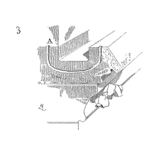
Your staff has a concept for a deepwater completion product. They say it is the solution offshore operators need. The concept contains many new components and seems risky. How mature is the technology?
Conducting a Technology Readiness Assessment (TRA) answers these questions. A TRA assesses the maturity of the technology in a product and assigns it a Technology Readiness Level, or TRL. The higher the TRL, the more mature the technology, and the lower the risk.
 When practiced correctly, a TRA assesses the new product or technology, the application, and the relevant organizational knowledge. This includes the basis of design, service environment, materials, the reliability of similar products in the application, and other aspects. The resulting TRL determines the due diligence required for de-risking.
When practiced correctly, a TRA assesses the new product or technology, the application, and the relevant organizational knowledge. This includes the basis of design, service environment, materials, the reliability of similar products in the application, and other aspects. The resulting TRL determines the due diligence required for de-risking.
In the example above, Engineering decides to upgrade a legacy packer for deepwater pressures by increasing component thicknesses. A new seal material is used which resists chemical attack from typical deepwater completion corrosion inhibitors. The OEM has little experience with this material, but the packer passes validation testing in the API 11D1 standard. Factory acceptance test failure rate is higher than with similar products. Engineering discovers the seal material has difficulty sealing below 130 ºF. However, the product rating is 400 ºF, so shipments are approved.
Then, field failures occur.
A failure analysis concludes that the seals leak when the packer is conveyed through 40 ºF sea-bed temperatures. A TRA conducted early in the project would have identified the material and application knowledge gaps and the appropriate due diligence.
The National Space and Aeronautics Administration (NASA) developed the TRL process to assess the maturity level of new technologies. Shouldn’t you be using TRL to assess the maturity of your new product technologies and concepts, especially for critical applications?
TRUTH: Only mature, de-risked technologies should be used in critical applications.
This is the 2nd in a series of 10 articles on critical equipment design for offshore completions.
Leave a Reply